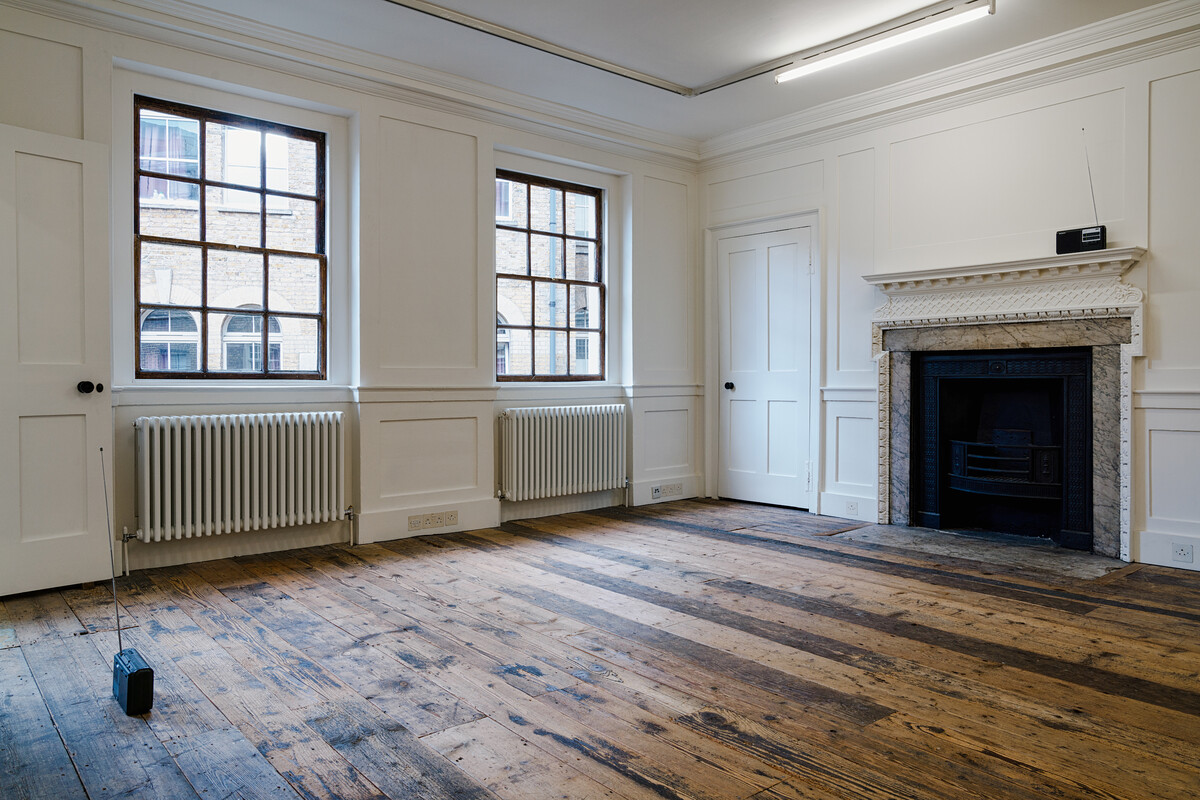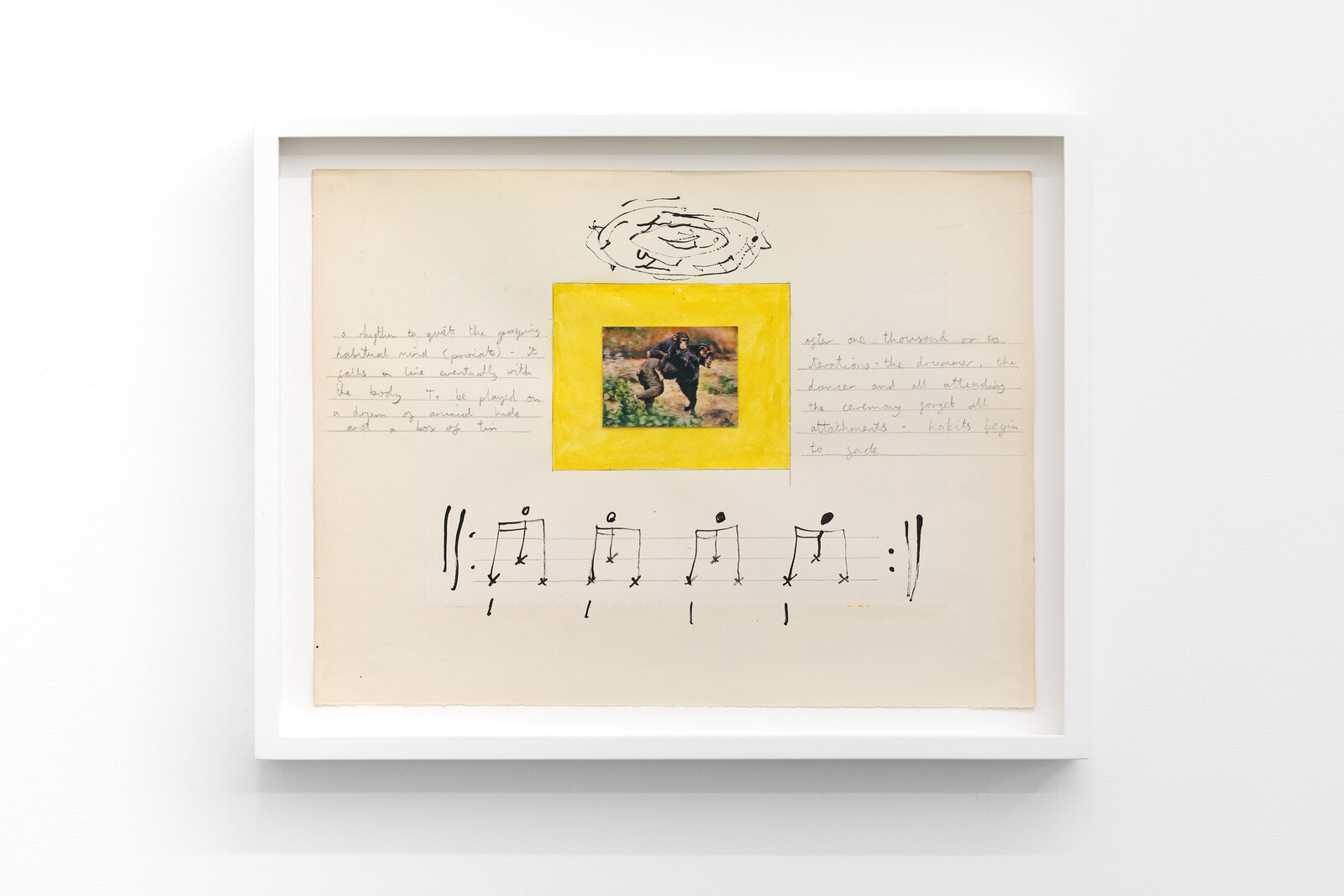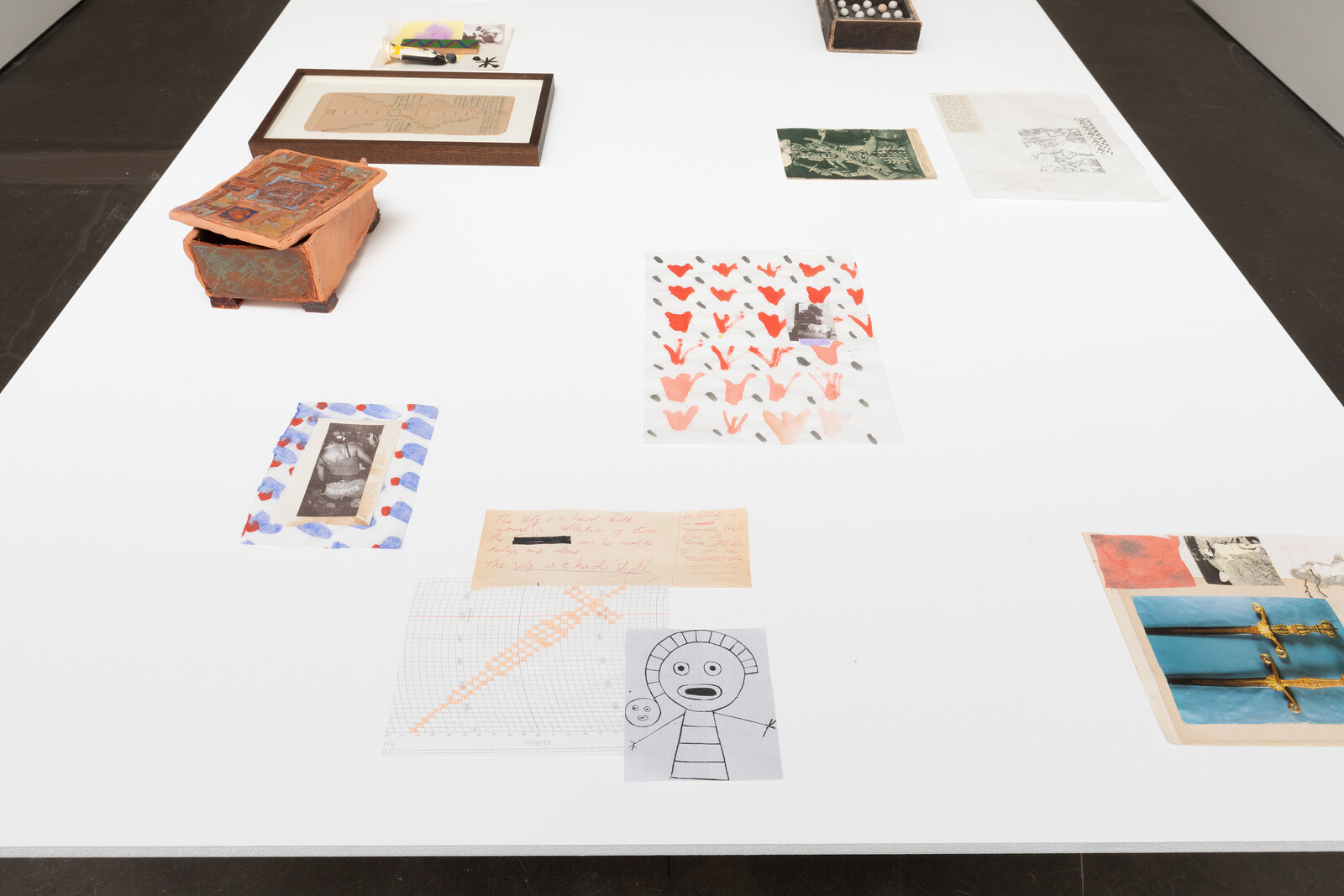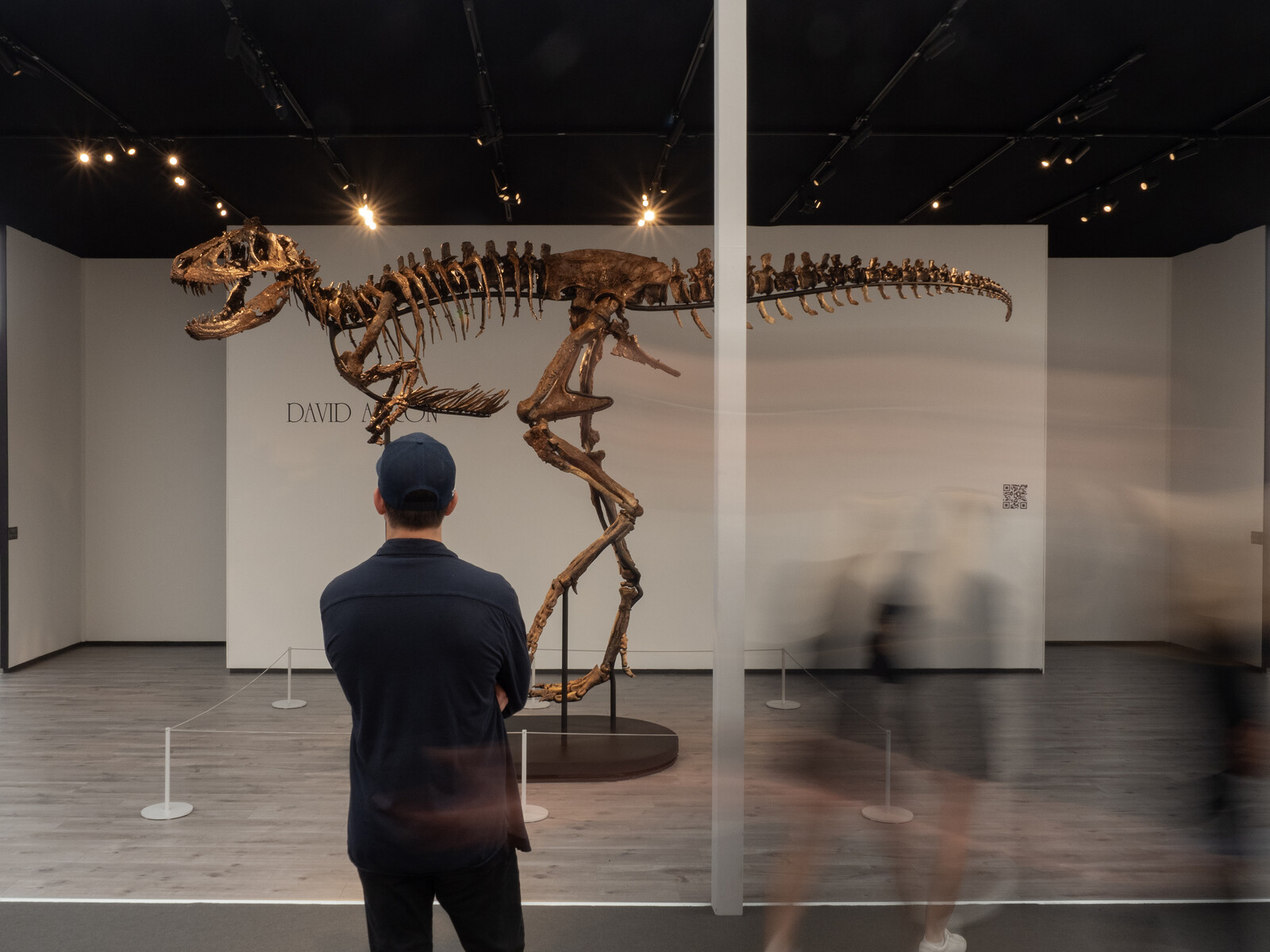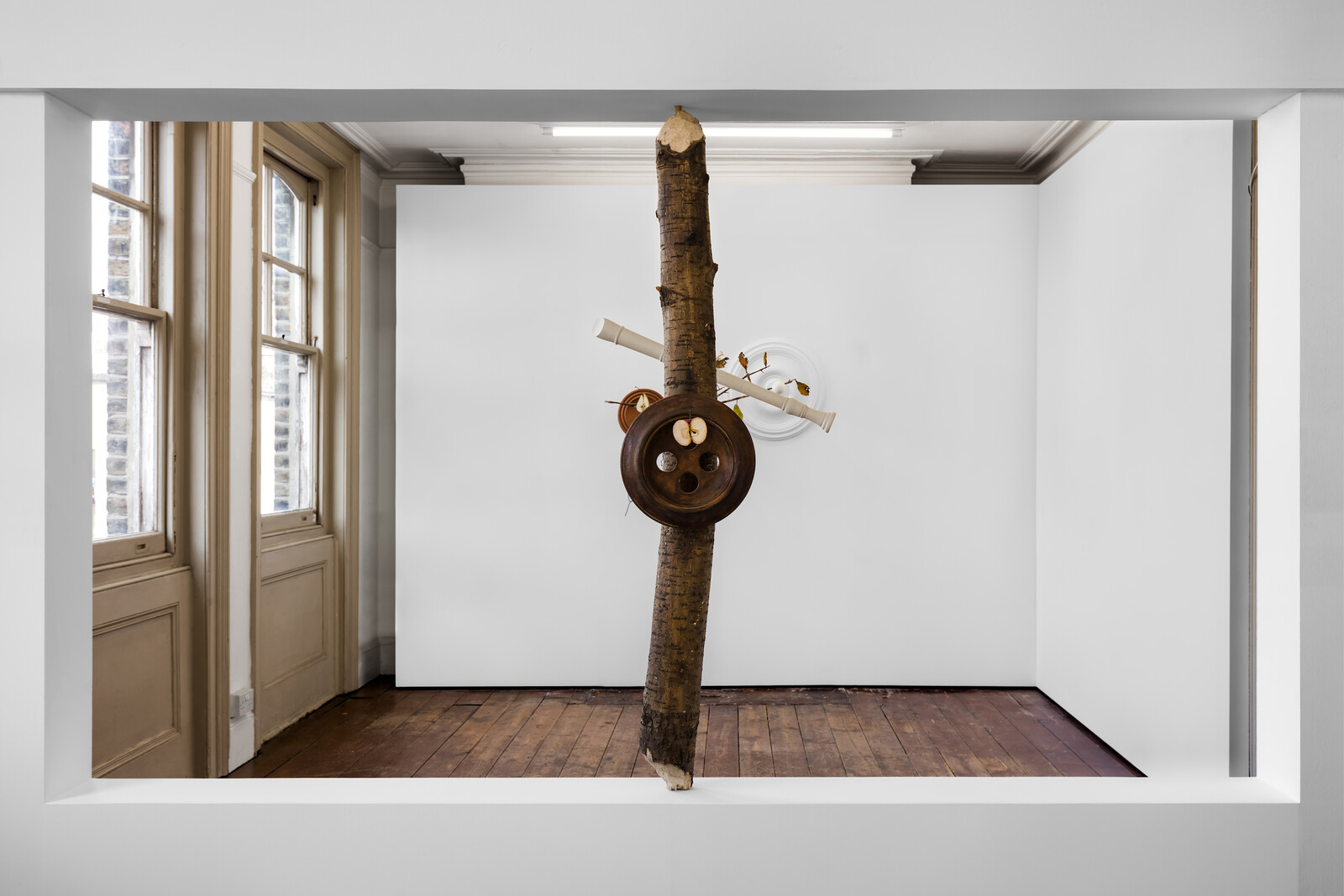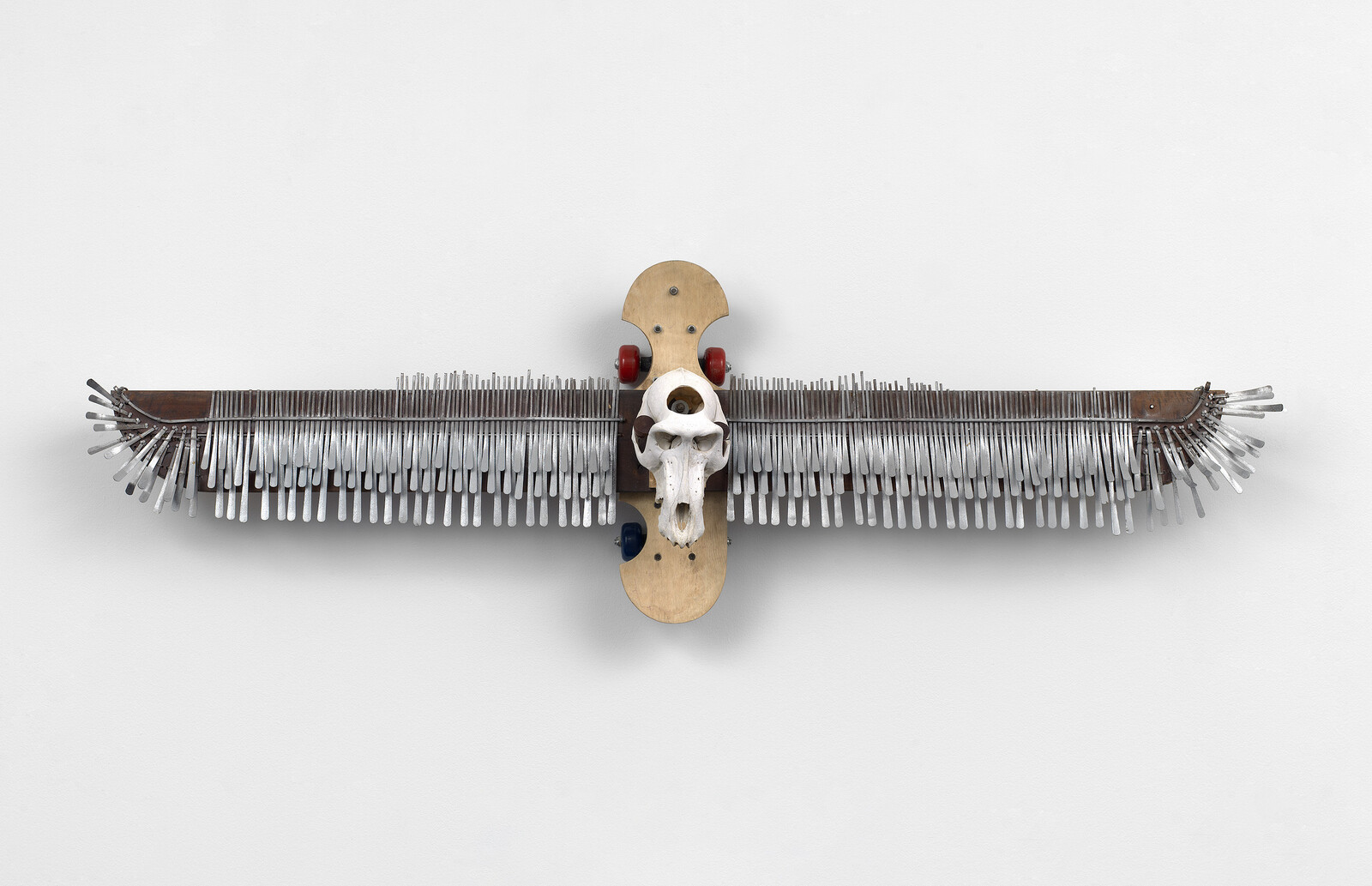“Celebrating 20 years,” ran the bus and magazine ads for Frieze London, keen to capitalize on having reached a milestone. In 2003, the first fair was welcomed as a galvanizing and creative force—a Studio International review from the time breathlessly described it as the “the real thing […] the apotheosis of swing […] the Stargate.”1 Such enthusiasm seems cute now, after the artist projects that supposedly set the fair apart from other trade events (Mike Nelson earning a Turner Prize nomination in part for his 2006 installation at the fair) have been scaled back almost to invisibility, and the “Focus” section for younger galleries, introduced in 2013, effectively assimilated parallel smaller fairs such as Zoo and Sunday. Of the 164 stand-holders at this year’s Frieze London, only 30 of them (predominantly, of course, the larger multi-venue galleries) were at the first 2003 fair. Through all this, the fair has long presented itself as an annual temporary institution, masquerading as such among the long-term underfunding of the city’s public museums.
This hoarding of resources has a distorting effect on coinciding and parallel events that would otherwise register as an alternative, both to the fair and other art spaces around London. Several smaller London galleries banded together to present “Cornershop,” an overcrowded group show in a new-development strip mall next to Borough Market, and its sister event “Minor Attractions,” a late-opening exhibition in Soho. Here, Vilma Gold—a participating gallery in the 2003 fair that in 2017 closed its permanent space—presented a series of black and white photo-collages by Stephen Dwoskin adjacent to a presentation by Death Row Records of a canvas adorned with a leather jacket, both bearing the illustrations by Joe Cool and Riskie Brent for the cover of Snoop Dogg’s Doggystyle (1993). Amusing and jarring though this pairing is, and while “Minor Attractions” presented itself as a “non-fair,” everything is of course for sale: the result is an extension of a fair’s jackpot logic and scattershot aesthetics.
The art fair is the realm of uncaring juxtapositions, wildly disparate elements placed in accidental proximity. Hence the unlikely pietá of a baby Tyrannosaurus rex skeleton alongside yet more of Barry Flanagan’s prancing hares at Frieze Masters. Or a careless coincidence at Frieze London that set Jordan Strafer’s film LOOPHOLE (2023) at Hot Wheels and Heidi Gallery, that dramatizes moments from the early 1990s rape trial of William Kennedy Smith, steps away from a wall with Candice Lin’s project for the fair. Titled Feline Messages to the Human World (2023), Lin’s work comprised several painted kites that were meant to be flown outside once a day, including one depicting a mutant rat secreting a rain of yellow liquid onto a group of rapt and reverent cats, the liquid spelling out a headline across the top: “BALLJUICE.”
When the alternative is no alternative, blue chip galleries cosplay as such. Gagosian found an as-yet undeveloped house in Spitalfields to house Christo’s “Early Works.” Among the patina of peeling paint and time-smoothed wood were four compact floors of things like shoes, buckets, and a typewriter, all wrapped and tied up like captives, alongside the unspoken admission that such art might need more of a supportive context than white cubes and art fairs. The unnaturally warm October sun slanted through the windows onto Wrapped Magazines (1972–73), stacks of Life, Newsweek and New York Magazine bundled into thick, semi-transparent plastic; on one cover, twine covers the eyes of an Angela Davis portrait. These are time capsules of a sort, but ones that seem to prefer to remain swaddled in the past.
On the top floor of Raven Row is a void: a vertiginous spiral of sound conjured by three small FM radios sitting on the wooden floor. Overlapping vocals trap you between the pleasure of recognition and the disorienting pull of the music. Lutz Bacher’s KMS (2016), shown as part of her posthumous exhibition “Aye!,” is a looped fragment of Roberta Flack’s 1973 version of “Killing Me Softly” broadcast on short-range radio. Each antennae picks it up at a slightly different moment, creating a tinny, stuttering swell. Amidst the noise and bustle of the week, it was no surprise to find a haven in this private, non-profit institution whose shows are often studious and thorough. Elsewhere in London, I found other quiet reverberations and compellingly mute compositions that expanded on Bacher’s sharp dream music.
In the back room of Stephen Friedman’s new Cork Street gallery is a condor-like totem sculpture: an elongated baboon skull mounted on top of a small skateboard, with wooden wings flecked with the thin metal keys of a thumb piano. Masimba Hwati’s Trepanation (2015) was part of an untitled “group presentation” curated by Yinka Shonibare as an adjunct to his show in the main gallery space. The violence of the title offers one explanation for the large circle carved into the primate’s skull, which also felt like the expectant sound hole of a reverberating, unearthly instrument. An unexpected accompaniment arrived in Oscar Enberg’s “Schiller’s Skull; Mysterious Vessel,” at Brunette Coleman. Amidst spindly sculptures dotted with carved wooden leaves, flowers, apples, and pears is minor music (2023), a chunk of tree trunk propped up in the hole in the wall between the two gallery rooms. Appended to one side is a carved recorder. There are indentations for finger holes, but the instrument hasn’t been hollowed out. Instead, a small fox bone juts out at an angle, leaving us to imagine what deathly, imaginary sounds might be emitted.
In the windowless basement of a former office, home to Indigo+Madder, Leo Robinson’s “On Exactitude” has a series of diagrams and scores displayed on the walls and a large table in the center of the room. Some give instructions to realize them: the collage Untitled (drum ritual) (2022) features a line of drum notation across the bottom, below a photo of a chimp bearing a child on its back and handwritten notes: “a rhythm to quiet the grasping habitual mind (primate).” On one wall are a series of eighteenth- and nineteenth-century Indian yantras, their geometric patterns suggesting the indentations of a player piano roll waiting to be performed. Among a cobbled-together set of scribbles and collages, the most effective pieces are those that release the spiritualist ramblings and let the patterns do the communicating. Ecstasy Mantra (2023) is a small sheet of paper patterned with black dashes and red flower-like “Vs,” attached to which is a small, grainy black-and-white photo of someone who appears to be dancing. The uneven rhythm of the watercolor, paired to the jumbled energy of the image, instills at least a small hope for new forms yet to come. “After one thousand or so iterations,” drum ritual instructs, “habits begin to fade.”
“Frieze Art Fair,” Studio International (December 04, 2003), https://www.studiointernational.com/frieze-art-fair.
